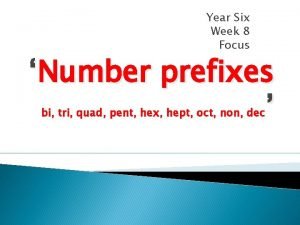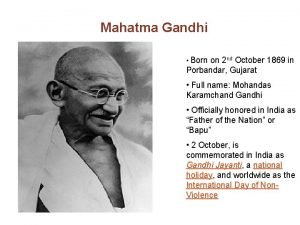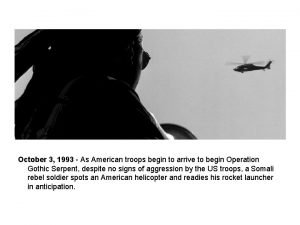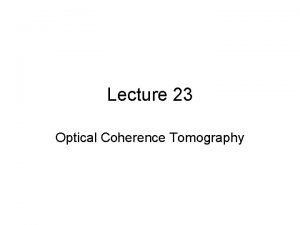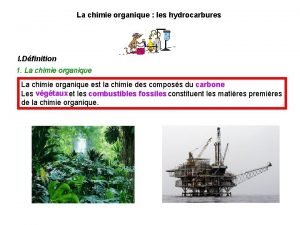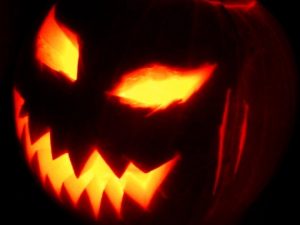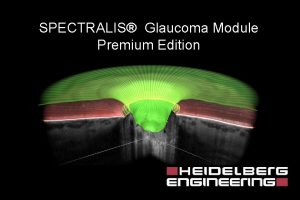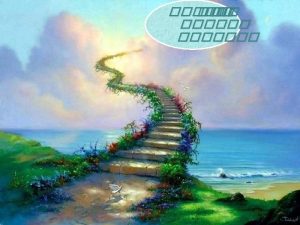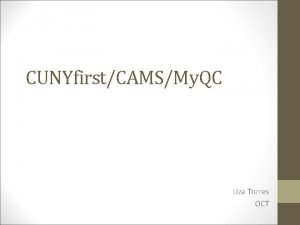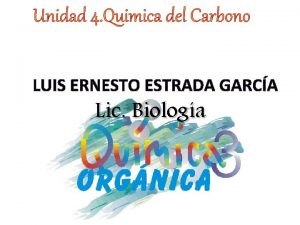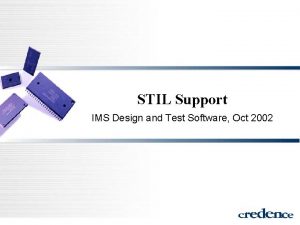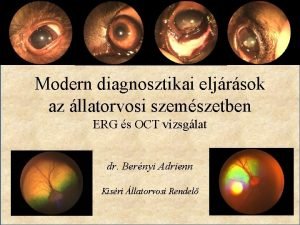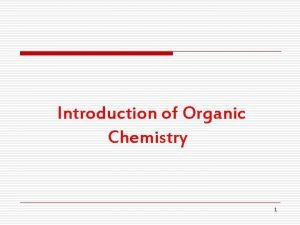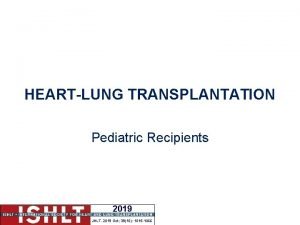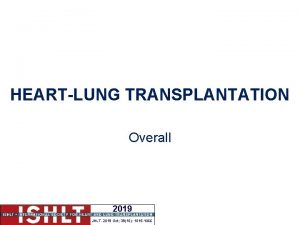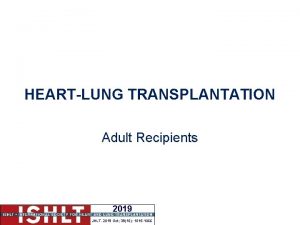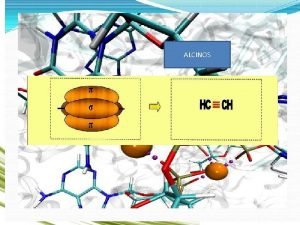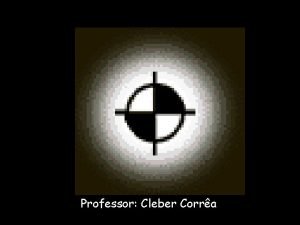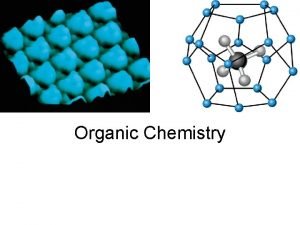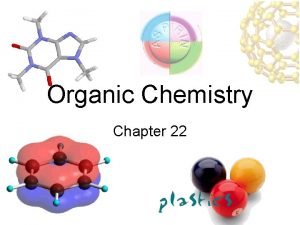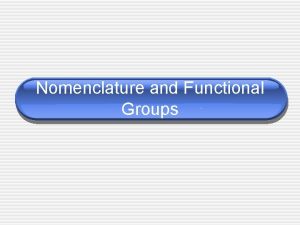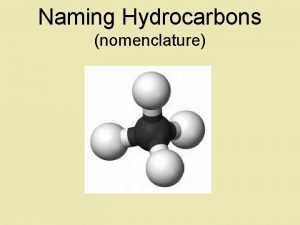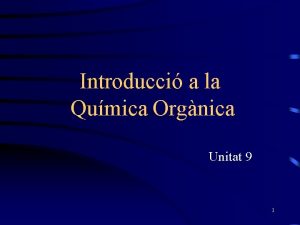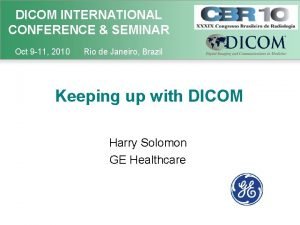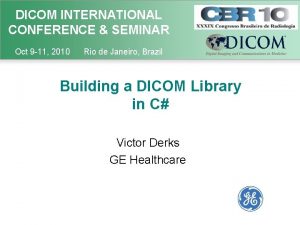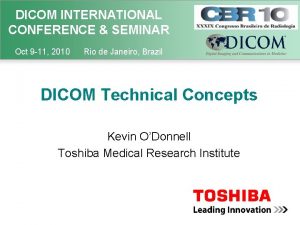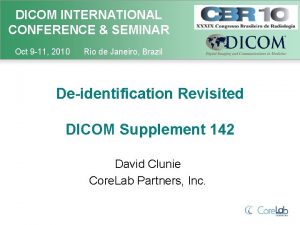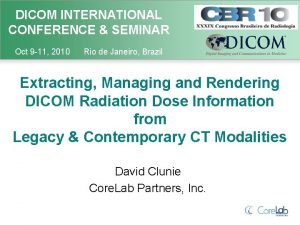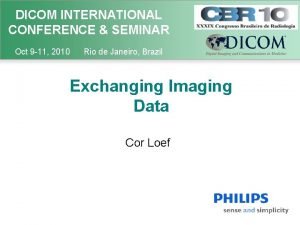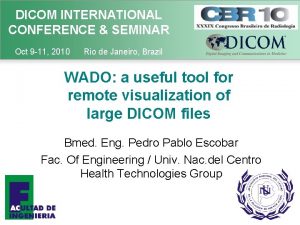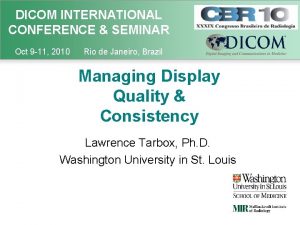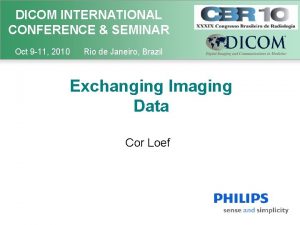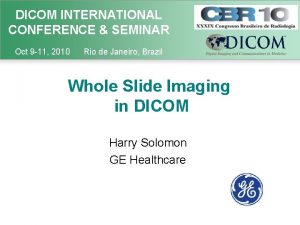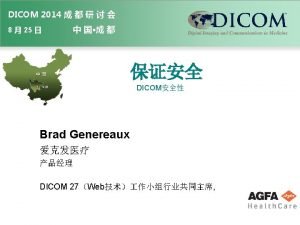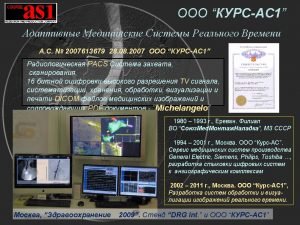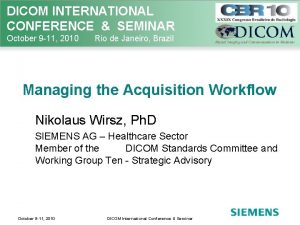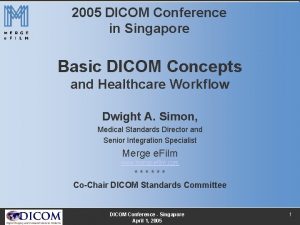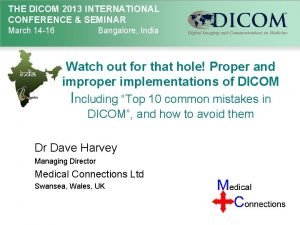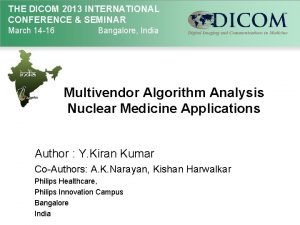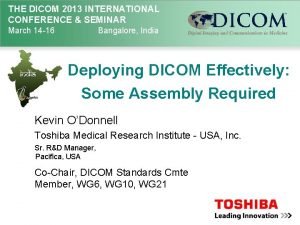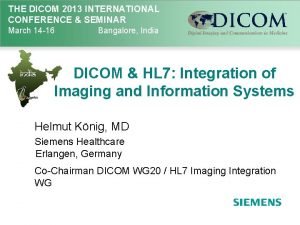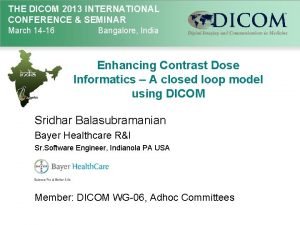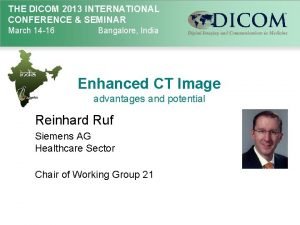DICOM INTERNATIONAL CONFERENCE SEMINAR Oct 9 11 2010




























- Slides: 28

DICOM INTERNATIONAL CONFERENCE & SEMINAR Oct 9 -11, 2010 Rio de Janeiro, Brazil Exchanging Imaging Data Cor Loef Philips

Exchanging Imaging Data • Objective: This presentation will answer the following question: – What are the types of DICOM objects and how do we move them around, i. e. over a network as well as on media?

Exchanging Imaging Data • Agenda – Main Classes of Objects: Images, Presentation States, Structured Reports, Encapsulated Objects – Pushing Objects, Pulling Objects, Finding Objects and Retrieving Objects – DICOM: a Protocol vs a File Format vs a product Internal Data Representation – Use of Media: CDs, Memory Sticks, Email, WADO

Information Object Definition (IOD): IE’s Modules Attributes

Information Object Definition (IOD): • DICOM Composite Objects: For persistent, “permanent” objects using DIMSE-C commands (C-Store, C-Move, CFind…) l Multiple IE’s: relate to DICOM Information Model (Patient-Study-Series-Image…) l Cannot be changed or modified, if so, create a new object with new SOP Instance UID l

Multi-frame Objects: Vector • • Ultrasound Multiframe Nuclear Medicine XA and RF New objects: MR, CT, PET, XA-XRF (new), X -Ray 3 D, US 3 D • VL and Ophthalmology • Any future new objects: NM (new)

Structured Reports: • Same structure as Images: – “main body” contains report and/or other information (measurements, etc. ) instead of pixels – Same structure for header – Same study information – Modality is “SR” – Has a tree structure

SR example (IHE simple report):

SR example (Key Image/Object Note KON):

Encapsulated Objects (SC and PDF): • Some objects are difficult to encode as “native” objects: • Secondary Capture (SC): – Digitized film, captured video, scanned documents • Encapsulated PDF: – typically for bone scans and eye care (topographic maps)

Softcopy Presentation State: - Present images (almost) identical on softcopy media in standard manner - Separation of Stored Image Instances from Display characteristics and changes - Includes shutters, image annotation, spatial transformation, display annotation

Softcopy Presentation State: Solution: - Create Composite object containing the presentation state parameters ONLY (no images) - Link this Composite object to one or more images (Series, Images) - Store within same Study; Modality “PR” - Communicate with regular Storage service (C_Store); Retrieve with Query/Retrieve service

How do we move these objects around? Pushing, Pulling Objects (Storage SOP Classes), Finding Objects (Information model/FIND), Retrieving Objects (Move/Get)

Storage Service class: Information System Modality Push/ PACS Push Printer DICOM C-Store Modality Archive PACS Display

Storage Service class: l Transfer composite objects (e. g. images, reports, RT plans, waveforms) from one AE to another l One AE functions as the SCU, the other as SCP l SOP classes use C-Store DIMSE-C service l Information is stored in some medium, accessible for some time (Issue! Might need Storage commitment!)

Query/Retrieve Service class: SCU/ SCP Information System Modality Pull/PACS Pull Printer DICOM C-Find DICOM C-Move Archive Modality PACS Display

Query/Retrieve Service class: l Simple Query, NOT full SQL: l Query: Basic image information query (“FIND”) using small set of common key attributes l Retrieve: Either from remote AE (“GET”), or Xfer from one AE to the other (“MOVE”) l Note: “GET” rarely supported l Extensions allow retrieval of selected frames of a multi-frame

Query/Retrieve Service class: Note: Most vendors also support a proprietary, direct protocol DICOM I/F SQL database (Informix, Sybase, Oracle)

Query/Retrieve Service class: l Key Attributes: l U: Unique l R: Required l O: Optional Image IOD Pat name Pat ID ----- Keys

Keys for FIND: Patient’s Name (0010, 0010) R Patient ID (0010, 0020) U Study Date (0008, 0020) R Study Time (0008, 0030) R Accession Number (0008, 0050) R Study ID (0020, 0010) R Study Instance UID (0020, 000 D) U Modality (0008, 0060) R Series Number (0020, 0011) R Series Instance UID (0020, 000 E) U Instance Number (0020, 0013) R SOP Instance UID (0008, 0018) U

Query/Retrieve Service Class: Q/R SOP Classes use: l C-Find: l SCP matches all keys specified in the request against it’s database l May be at Patient, Study, Series or Image level l SCP provides Response for each match containing values for all keys and all requested, known attributes l Cancel if needed

Query/Retrieve Service Class: Q/R SOP Classes use: l C-Move: l SCU provides unique key values for needed SOP instances l SCP initiates C-Store(s) as SCU (on a separate Association) l SCP can issue C-Move responses with status pending until all C-Stores are completed or after each Store (see Conformance Statement) l Can issue Cancel at any time

Protocols, Files, Storage • Protocols: – DICOM defines a standard communication protocol (PDU, TCP/IP, addressing: port #, AE title) • Files: – DICOM also defines a standard for files on media: “Part-10 files” = meta information + a SOP instance – Media includes CD, DVD, Memory Sticks, etc. – Part-10 file format is also extended for zip files, email, and web access (WADO)

DICOM Media: • Meta-file header: • Transfer syntax (encoding) • SOP Class • Who generated it • Compliant with standard OS’s • DICOMDIR required for exchange media • Index/database of files

DICOM Media Specifications: Part 10 DICOM Application Entity Basic Dir. Service / Object Pairs Part 12 Part 11 DICOM File Format Media Formats: e. g. File data structures Physical Media: e. g. CD-R; 90 mm MOD, etc.

Protocols, Files, Storage: • Device Internal Storage: – DICOM defines how images go in/out of device – DICOM does NOT define how to archive images (there is NO archive standard) – Some vendors keep images in DICOM format, some pre-process images using a compression method, either standard or proprietary – Migration of both PACS databases and archives are common when changing releases, vendors, etc.

Conclusion: • DICOM objects include: – not only images – but also SR’s, Presentation States, and encapsulated objects • DICOM images are moved around using: – the DICOM protocol – the DICOM Part-10 file definition • There is NO DICOM archiving standard, some archives store “natively”, some do not

DICOM INTERNATIONAL CONFERENCE & SEMINAR Oct 9 -11, 2010 Rio de Janeiro, Brazil Thank you! Cor Loef: cor. loef@philips. com www. philips. com
 Elisabeth brinton
Elisabeth brinton Hex hept oct non dec
Hex hept oct non dec About mahatma gandhi in english
About mahatma gandhi in english Systemy liczbowe
Systemy liczbowe October 3rd 1993
October 3rd 1993 Low na
Low na Hydrocarbure formule
Hydrocarbure formule Sunset on october 31st
Sunset on october 31st Oct spectralis
Oct spectralis Visante oct
Visante oct Cuny cams
Cuny cams Cual es el hidrocarburo mas simple
Cual es el hidrocarburo mas simple Stil oct
Stil oct Prefix for alkanes
Prefix for alkanes Organic biochemistry
Organic biochemistry Erg vizsgálat
Erg vizsgálat Prop but
Prop but Jhlt. 2019 oct; 38(10): 1015-1066
Jhlt. 2019 oct; 38(10): 1015-1066 Jhlt. 2019 oct; 38(10): 1015-1066
Jhlt. 2019 oct; 38(10): 1015-1066 Jhlt. 2019 oct; 38(10): 1015-1066
Jhlt. 2019 oct; 38(10): 1015-1066 3butino
3butino Met et prop but pent hex hept oct non dec
Met et prop but pent hex hept oct non dec C10h22oh
C10h22oh Saturated hydrocarbon formula
Saturated hydrocarbon formula Saturated and unsaturated hydrocarbons
Saturated and unsaturated hydrocarbons Meth eth prop but mnemonic
Meth eth prop but mnemonic Eth meth prop but
Eth meth prop but Met et prop but pent hex hept oct non dec
Met et prop but pent hex hept oct non dec Homologous series formula
Homologous series formula

